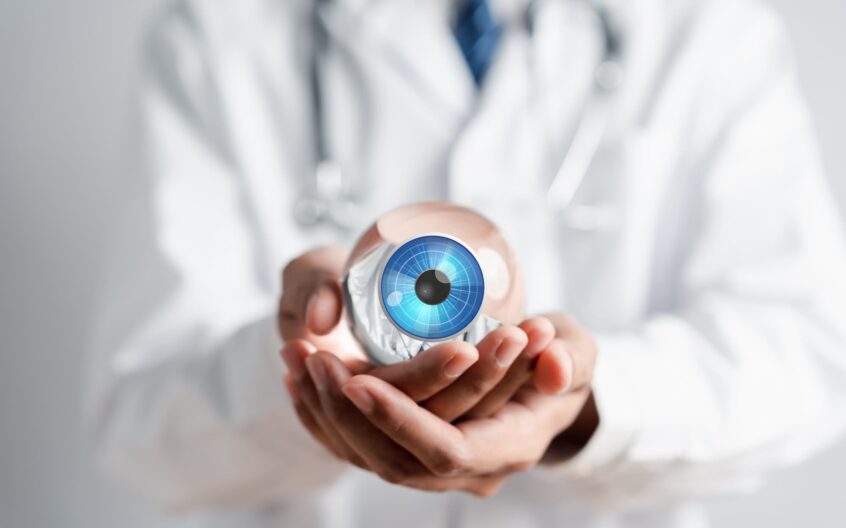The eye is a deceptively complex organ. What’s normally thought of as a singular structure is actually made up of many different component parts. One of these parts is the cornea, which is the clear outer layer across the eye. The cornea is an essential element of vision, but how does it work? Learn all there is to know about how the cornea works and its role in vision, plus how you can help to care for it to preserve your sight.
What Is the Cornea?
The cornea is the eye’s clear, dome-shaped front surface. It acts as the eye’s outermost lens, working with the internal lens to focus light onto the retina. This transparent layer is made up of five specialized layers: the epithelium, Bowman’s layer, stroma, Descemet’s membrane, and endothelium. Each layer has a unique role, contributing to the cornea’s clarity and strength.
The Function of the Cornea in Vision
The cornea is instrumental in allowing people to experience vision by focusing light onto the retina, providing clarity in what we see. As the eye’s outermost lens, it bends incoming light toward the internal lens, which then fine-tunes the focus to create a sharp image on the retina.
Besides its optical function, the cornea also acts as a shield that protects the eye from dust, germs, and other harmful particles. This helps prevent infections and supports overall eye health. Without the cornea, we would both see worse and experience far more frequent eye injuries and infections.
How the Cornea Works
The cornea’s unique curvature and transparency allow it to refract light effectively. As light enters the eye, the cornea bends the rays, helping them converge accurately on the retina. This precise refraction provides extra clarity of vision, refining the images we see. Even minor changes in the cornea’s shape can lead to refractive errors like nearsightedness or farsightedness, which is why maintaining its health and structure is such an important task.
Common Corneal Issues and Their Impact on Vision
Various conditions can compromise the cornea, affecting vision and eye health. Keratoconus, for example, causes the cornea to thin and bulge into a cone shape, distorting vision and potentially making it easier to damage. Corneal abrasions, often resulting from injuries, can lead to discomfort and blurred vision.
Any irregularities in the cornea can significantly impair sight, making it important to prevent eye injuries and get treatment if they happen. Early detection and treatment are necessary for managing these conditions effectively.
Maintaining Corneal Health
Preserving corneal health is essential for good vision. Regular eye exams can catch potential problems early, and good eye hygiene, such as washing hands before touching the eyes and avoiding rubbing them, helps prevent infections and injuries. Wearing protective eyewear during risky activities is also recommended. If symptoms such as persistent redness or blurred vision occur, seek professional care ASAP to avoid further complications.
Southwest Eyecare: Your Partner in Corneal Health
Southwest Eyecare offers expert care for corneal conditions. Our Ophthalmologists are experienced in diagnosing and treating a wide range of corneal issues, from common abrasions to complex diseases like keratoconus. We provide advanced surgical and non-surgical treatments that fit each patient’s needs. With a commitment to comprehensive eye health, Southwest Eyecare is your trusted partner in maintaining clear, healthy vision.
Protect Your Cornea Today
The cornea is essential for vision, serving as both a lens and a protective barrier for other parts of the eye. It’s what allows you to have clear eyesight and overall eye wellness. A deeper understanding of the cornea’s function can help you know how to take proactive steps to care for it, preserving your vision for years to come.
If you have concerns about your corneal health or need expert advice, contact us at Southwest Eyecare for comprehensive care and personalized treatment options.
Featured Image: MMD Creative / Shutterstock

